Why Do Organizations Need Information Systems?
Irrespective of age and time, organizations need an answer to the following questions:
- What is the business opportunity for a brand that is not derived from the current offering?
- What impact have multiple distribution channels had on the sales of the brand?
- Has a competitor’s price increase impacted sales of our and other competitor brands?
- How are our adverts impacting the sales of our brands?
- From which channel has the recent growth in the specific category come?
- What are the best-performing markets for the particular product, and what contributes to the growth?
- What is the source of sales volume on a new brand’s most recently introduced packing?
- What have been the results of the brand’s 25% off on-pack coupon?
- How has the sales department’s accrual program impacted distribution and promotion?
- In San Francisco, which channels do not support a specific brand's promotion drive?
- Which products are performing better and selling more?
- What product data is missing and needs to fix to improve product discoverability and conversions?
To answer these questions, one needs much data to be churned for reliable insights. The information systems aid in collecting these data points and help make sense out of them. The organizations spend billions of dollars to
- Keep track of the performance of their own as well as competitor brands and items across markets over time
- Gain insight into the impact and implementation of past programs and events
- Understand the driving force behind a brand’s business in each market
- Have a strategic competitive advantage
- Know their product catalog and data in detail
Your data needs to drive actionable insights to fulfill this existing information gap. For this derived wisdom to increase business, you need data and information systems.
Therefore, the following sections will describe the genesis of the information systems through the pre-internet and post-internet age and how they affect and define PIM we know.
The Genesis of Information Systems that Went to Define PIM We See Today
Pre-Internet Era
The first form of data was called the data cube, initially shared with the marketing department as a pile of paper or tape usually purchased by the company in a paper format. Company then consumed this data in two forms:
- Data Processing Systems
- Information Systems
Data Processing Systems
These were prevalent from the 1950s through the 1960s. The systems ran on COBOL language with data printed on large sheets of paper. The companies took in raw data and made a meaningful representation by dividing it into the product line, geographies, and time/periods. By the end of the 1960s, companies received data sheets via trucks and forklifts.
Information Systems
Information systems came into vogue in the 1970s. Earlier, companies operated the data systems in batches, but the new systems had time-shared tech. It made it possible for the companies to run multiple operations simultaneously. With increased computing capacity, managers saved much time.
However, due to a lack of adequate skill sets of managers and analysts, they could not leverage the full capability of the systems. They could only produce fewer reports like region topline, brand topline, region trend, brand trend, region opportunity matrix, brand opportunity matrix, and many others.
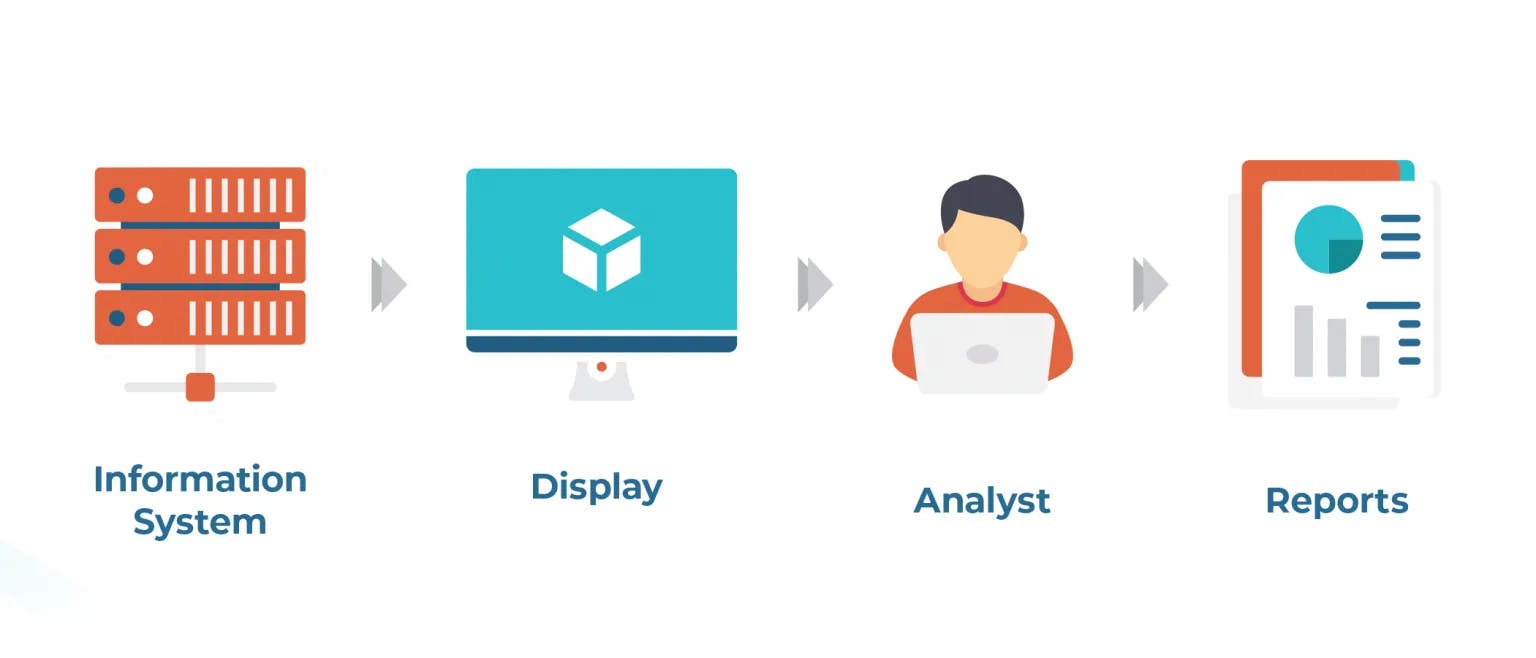
As time passed, the data points grew, and it became clear that companies needed better systems than before.
Data Challenges of the 90s
By the 1990s, the data ran into 200 million numbers, an enormous number given the data processing capabilities of that time. It often led to data overload or information blackout. There was too much data, and managers could derive many insights from it. With millions of new data arriving every week, it became paralyzing for the managers to understand the data, often called analysis paralysis.
However, towards the end of the 90s, a new system was in the picture called the knowledge-based system. The goal of the knowledge-based system was to convert the information derived from data stored in database management systems into insights.
The knowledge-based system had three phases:
- Data Acquisition (Database Management Systems)
- Data Interpretation (Management Information System)
- Insight Automation (Insight Generation System)
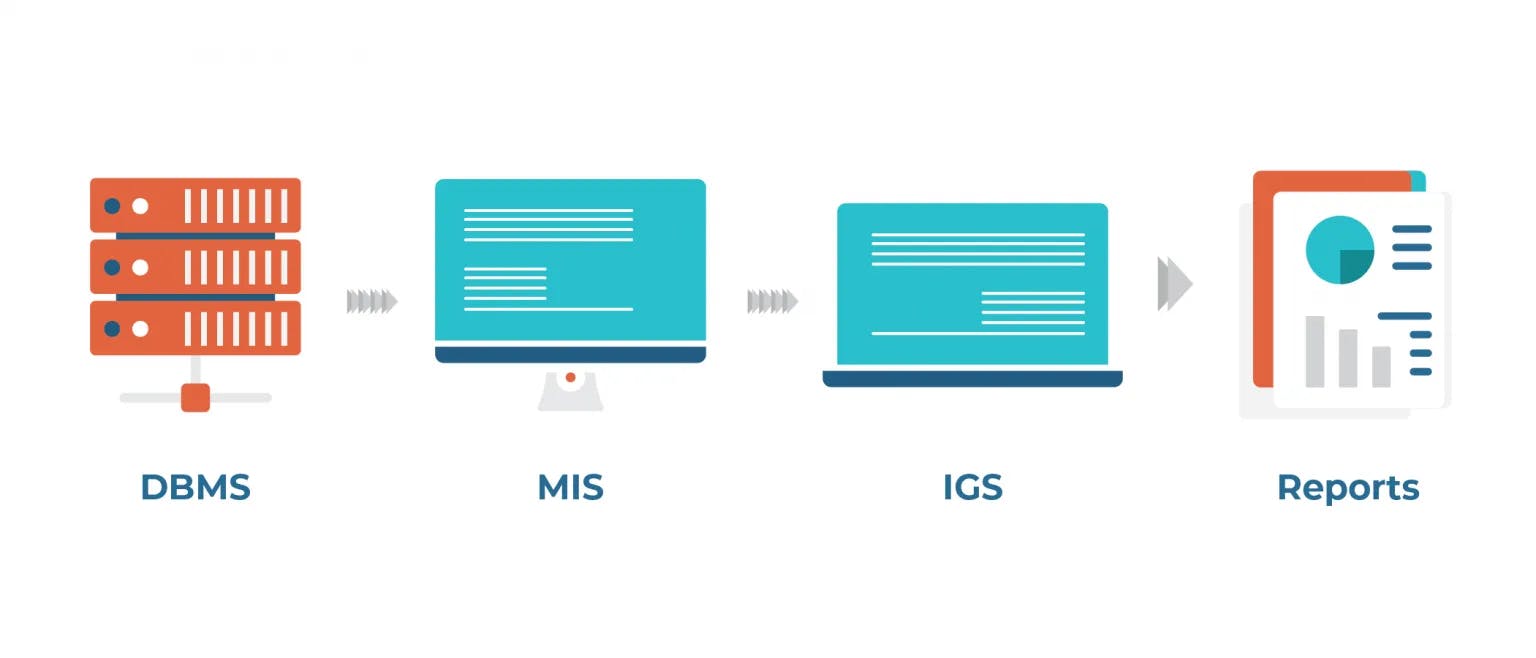
This philosophy works when organizations meet the following conditions:
- The managers have adequate time and the skills
- Capable systems are available for their use
- The databases should be small enough to commit such analysis
- The periodic information needs and ad hoc analyses can produce the relevant information
- For the above scenarios, the organization needs a manager with a problem-solving mindset and decision-making skills (with adequate information at hand)
In the last point, a unique decision can be an occasional decision not part of an ongoing process flow or a repetitive decision that must be taken often at periodic intervals.
For example, to clarify the difference, a decision to release a new product is a unique decision that brands make occasionally. The store manager’s decision to use display advertisements is a decision class because he must decide for every retail store.
When one faces a decision class situation, the data-to-information-to-insights problem(DIIP) approach becomes challenging. One has to assign several analysts to the task or train many managers to face the problem. In the example situation, a firm might provide an information system to all its sales representatives and then prepare them to make a few decisions involving their retail accounts. Another approach is to systematize the problem of insight generation using analytical and expert system tools.
Post-Internet Era
When the internet came into existence, it allowed organizations to distribute data, information, and insights from the east coast to the west coast and across the oceans. The insights developed could be generated across distributed systems and collated in a single place.
The internet came into existence in 1991. However, it realized its capabilities in 1995 when eBay and Amazon made their first sale in 1995 (With this event, eCommerce was born). ECommerce stores and similar businesses generated insights and collated them easily. However, keeping track of all the business understandings was challenging and gave rise to Insight Management Systems.
The insight management systems have 4 phases:
- Data Acquisition (Database Management Systems)
- Data Interpretation (Management Information System)
- Insight Automation (Insight Generation System)
- Insight Management(Marketing/Product Insight Center)
One can see the evolution in the Data to Information to Insights to Programs (DIIP) model:
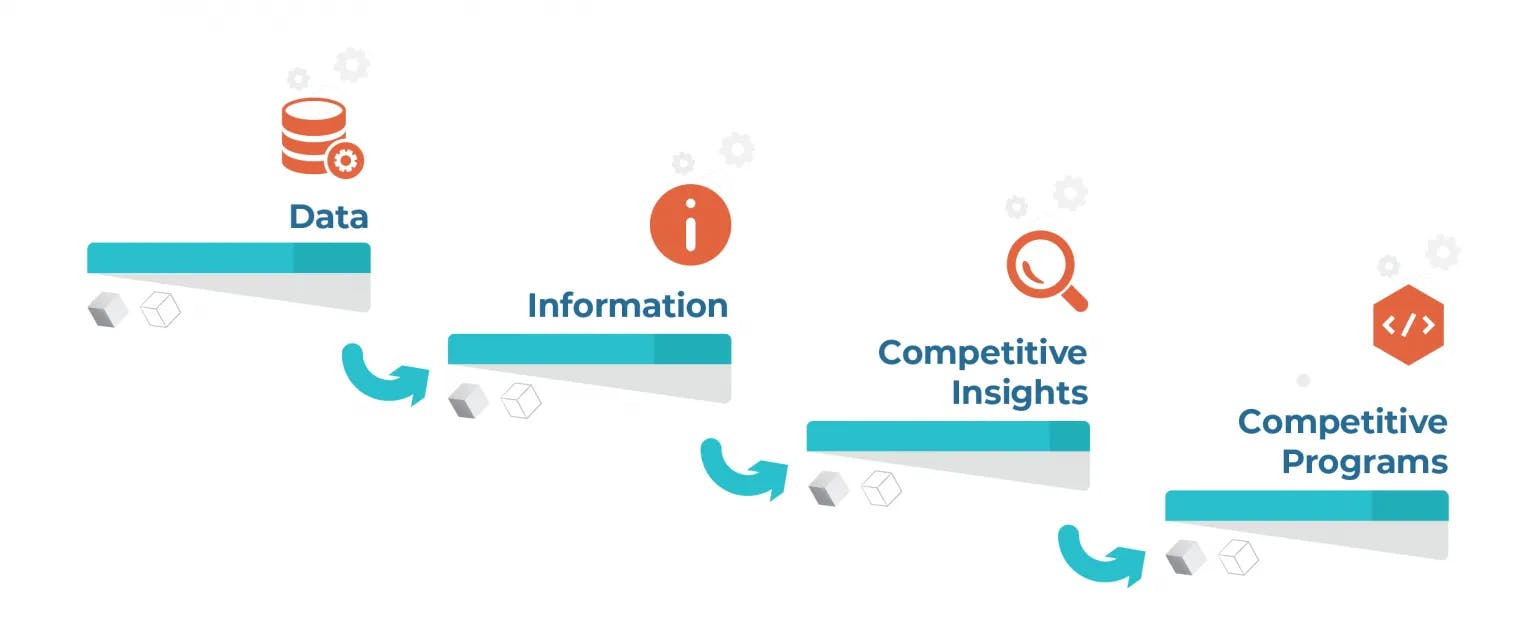
The insights management center was primarily for marketing managers. However, as time progressed, product managers also got access to the insight center.
Each eCommerce store had its format for recording product data. In the same way, each information system vendor had its way of managing product data. There was always a mismatch between the two formats. With multiple programs in place, a uniform structure for storing the product name and its properties became an issue. Much effort again went into recording the product data in the information systems.
Global Standards Organization(GSO) developed the Uniform Product Code(UPC) to tackle the above issue. All the companies had to record their name and the product they were selling with the GSO. The UPC contained a series of numbers containing 12 digits that denoted the product, product features, and manufacturer. It helped to maintain synergy in storing product data and recording information in the product information system. Also, it was the first step that unified product information and defined PIM.
How Did UPC and ETIM Standards Define PIM We See Today?
The uniform product code allowed manufacturers, wholesalers, eCommerce stores, and retailers to build databases to store all the information about the products and share it with eCommerce stores like Amazon and Walmart to sell online.
However, the ever-growing size of the product data remained a challenge. The product data was now more extensive than ever. Multiple retailers competed against each other for shoppers’ attention. In turn, the product descriptions became expansive. They contained rich media(high res. images and videos, gifs) to represent the product in the best possible way and attract the right buyers. As the size of product data grew, so did the product description errors.
The brands, eCommerce retailers, and aggregators had to share the product data with large eCommerce platforms to increase market coverage and showcase their products to more shoppers. UPC standards were insufficient for product information exchange between various systems.
Therefore, ETIM International introduced a standardized way of representing and exchanging product data between electronic systems. Introduction of ETIM standards that went miles to define the PIM we see today.
ETIM Standards
ETIM International introduced ETIM (European Technical Information Model) standards in a confluence of ETIM Nations(Austria, Belgium, Denmark, Estonia, Finland, France, Germany, Hungary, Italy, Lithuania, the Netherlands, North America (USA/Canada/Mexico), Norway, Poland, Portugal, Russia, Slovakia, Slovenia, Spain, Sweden, Switzerland, and the UK). It classifies the product into product features, attributes, classes, values, variants, and synonyms to make product discovery more effortless and accurate. All the member nations must comply with the formats, thus, making the exchange of product information easy.
Storing the product data in a single location, managing data sanity, adhering to various product data exchange standards, and sharing it across eCommerce platforms is a menial task that contributed to many errors in the product description and loss of revenue. Shoppers readily returned any wrong product that didn’t comply with the product representation in the eCommerce store listing. It created a bigger problem called Product Return Rate and Higher refunds.
The Need for Modern PIM Solutions
431.6 billion USD of online product purchases happened in the US and 4.28 trillion USD across the globe in 2020. This number is expected to increase in the times to come. Shoppers, however, return 30% of the products purchased online, 64% purely because of the wrong product description— amounting to 500bn USD in losses. So, the challenge of producing accurate product Information persists today and in an even more complex fashion.
The product return rate and higher refunds are not the only problems retailers face. Here is the list of other challenges retailers, brands, and product aggregators deal with while trying to sell online that did define PIM we see today:
- Inefficient manual product data management process
- No single location for the product data
- Collaborating with internal & external users is a challenge
- Complicated workflows in data error correction and validation
- Large sets of complex tools to manage product data
- Cumbersome and time taking online product submissions to product retailers
- No control over product release
- Inconsistent Product Data across eCommerce channels
- Lack of awareness of a single platform to manage product data.
However, they needed a new system that could:
- Create a single source of truth for all product data
- Improve data management
- Enhance the overall quality of product information
- Improve cross-team collaboration
- Increase productivity
- Faster time to market
- Better shopping experience
- Make product information search easier
To achieve this, systems have to talk to each other and deliver quick results with ease as required. All these challenges and expectations that retailers have and the overall evolution of data requirements and information did define the PIM we see today.
What Does PIM Look Like?
The Product Information Management (PIM) system came into the foray to solve these teething issues. The PIM has five essential functions:
Data Ingestion
Data ingestion receives product data from multiple sources, maintains the data quality, and formats the raw data into meaningful product information. As the business channels, eCommerce stores need to keep a single source of truth for this fragmented data.
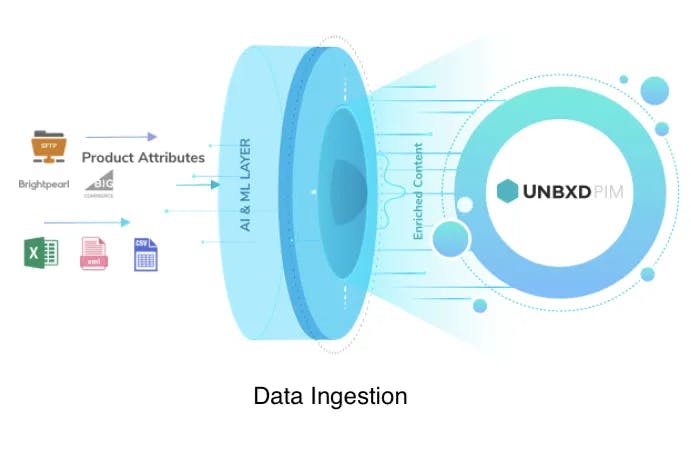
Data Transformation
Data transformation takes care of the bulk data and product properties. It manages any inadequacies and inaccuracies in the product information and creates filters. It also has multiple role-based user access levels to upkeep the data’s sanctity.
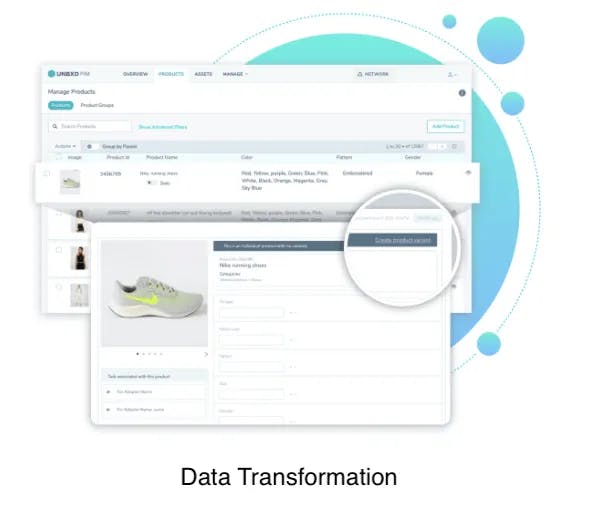
Data Distribution
The data distribution system is the only connector between products and distribution channels like CSEs, aggregators, marketplaces, brand portals, eCommerce platforms, and product sheets. This system upkeeps and tracks all the information shared across platforms to meet the requirements error-free.
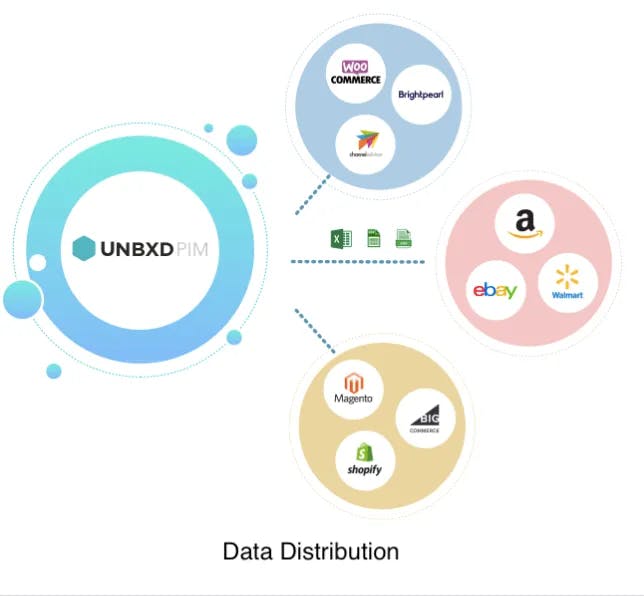
Workflow Management
Workflow management records events and the actions are taken based on those events. Workflows help automate these menial tasks, saving time and effort and keeping the team on essential duties.
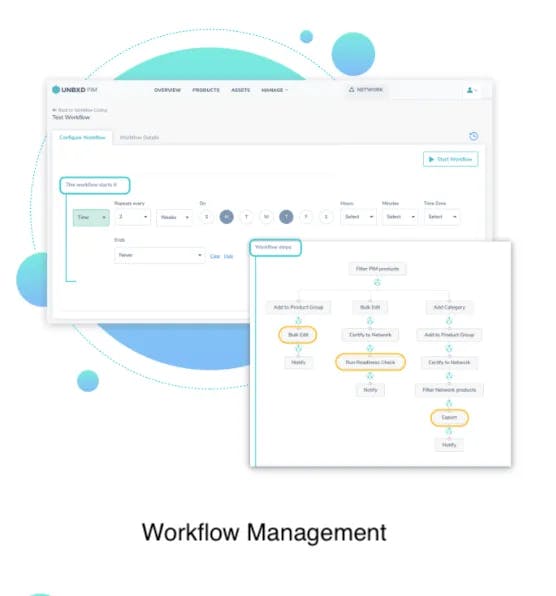
Digital Asset Management
Digital asset management aids eCommerce platforms in storing and manning the bulk media required for smoother functioning. It associates media to correct descriptions and provides various other tools to edit the media.

Conclusion
Product Information Management systems have come a long way from just being able to collate and manage data to drive actionable insights. From taking into account data collation and analysis to advanced capabilities of data enrichment and transformation. From being just one repository of all the data to become a central node to export relevant information to the desired channels/marketplaces. From being just a sales/marketer’s pet peeve to becoming a core piece in establishing the digital commerce journey for the entire organization.
If catalog or product information management is something you are looking to solve for your eCommerce store, Unbxd PIM is the right solution to help you with the same.
You can request a 30-minute demo call with the Unbxd PIM expert here.






